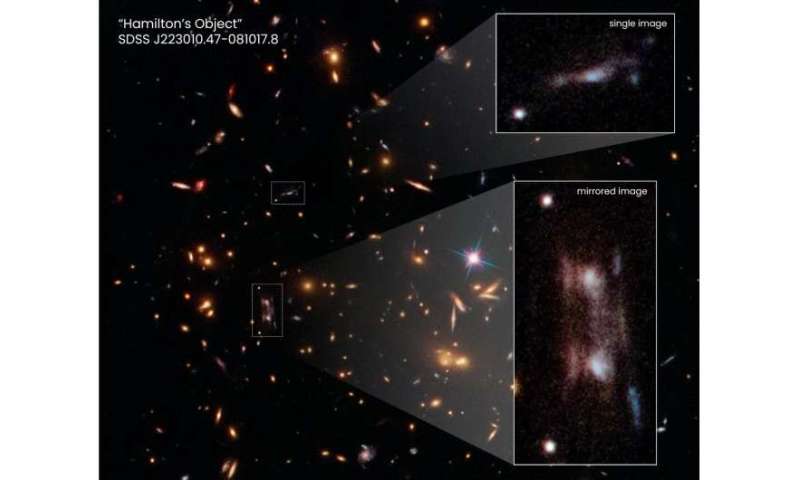Best of Last Week – Double galaxy mystery, turning books into digital art, evidence of a team brain state

It was a good week for space science as an international team of researchers found that an extreme exoplanet was even more exotic than originally thought—WASP-76b was found to be hotter than expected. Also, a "double" galaxy is still mystifying Hubble astronomers after years of study. Light from two bright, linear objects appears to be mirror images of the same object caused by gravitational lensing, making it difficult to discern the object's true configuration. And a pair of space scientists, Brett Gladman and Kathryn Volk with the University of British Columbia, ran simulations that suggested an Earth- or Mars-sized planet may be orbiting beyond Neptune.
In technology news, a pair of researchers, Milan Janosov with Datapolis and noted digital artist Flora Borsi, developed a way to produce digital art using data from published books—in one demonstration, they turned Asimov's "Foundation" into a work of art resembling part of the universe. Also, Bradley Lane, with the University of Kansas, found evidence showing that the energy revolution involving the transition from internal combustion to electric vehicles will be slow and rocky due to convenience issues. And a combined team from Heidelberg University and the University of Bern developed a framework to enhance deep learning using spiking neuromorphic substrates. Also, a team at the University of Helsinki used artificial intelligence to create a model that can generate humorous versions of existing headlines.
In other news, a team at The Rockefeller University found differences in the long-term COVID antibodies that are created in the body due to vaccination rather than infection. They were less effective at producing antibodies that continue to reproduce over time. And a Medieval Latin literature expert found evidence suggesting that Italian sailors knew of America 150 years before Christopher Columbus set sail.
And finally, if you have ever worked with a group of individuals and have felt the team was in a "groove" of sorts, you might have been on to something. An international team of researchers found the first neuroscience evidence of team flow as a unique brain state—suggesting that the brain waves of team members working well together are in sync.
© 2021 Science X Network